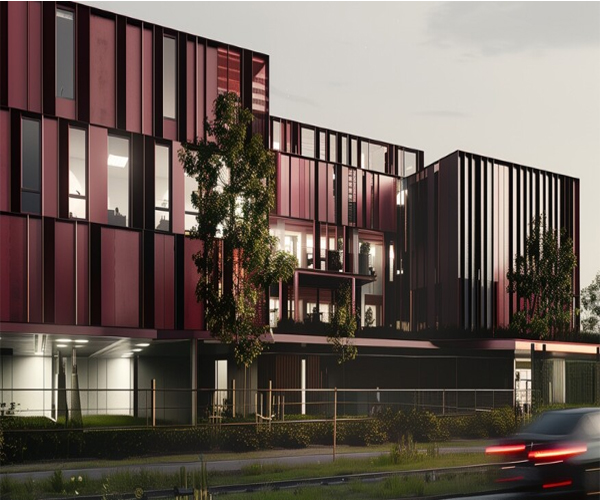The growing influence of artificial intelligence (AI) in architecture heralds a new era of design possibilities.
AI tools can enhance various stages of the design workflow. The survey showed that the conceptualization and pre-design stages have the most potential, with 68% of respondents stating so. It also shows that the technology is not limited to generating images but can be used for tasks such as layout/plan generation, feasibility studies, and building code and energy efficiency analyses.
This use highlights AI’s ability to strengthen sustainability efforts and creative workflows. AI’s influence on specialized architectural tasks spotlights its potential to streamline and elevate design work, as well.
As AI adoption becomes more widespread, concerns about its effect on job security are emerging. Architects and other AEC professionals acknowledge AI technology’s groundbreaking ability and the hurdles it brings. As the industry grapples with these shifts, the need for ethical guidelines grows ever more crucial, with 74% of survey respondents in agreement.
Guidelines that regulate the use of AI and address topics such as intellectual property, quality assurance, and transparency can ensure that the technology’s inclusion in architecture aids the workforce rather than compromises it. This ongoing conversation is poised to influence the future landscape of AI within the field, striking a balance between pioneering advancements and safeguarding job stability.
Optimism surrounding AI in architecture is evident, with 78% of survey participants anticipating a moderate to strong influence on design within the coming year. However, there is an endorsement for better development in AI tools, particularly for increased control over generated images and the capacity to convert 2D images into 3D models.
The transformative power of AI on architecture signals the dawn of a new chapter in design innovation. Already integral in conceptualization and pre-design, as the technology develops, it has the potential to boost other areas and become an indispensable tool across all phases of the design workflow.
Source: Architect Magazine




